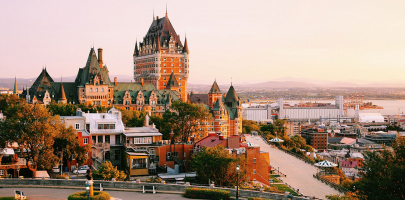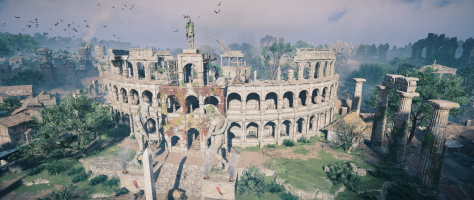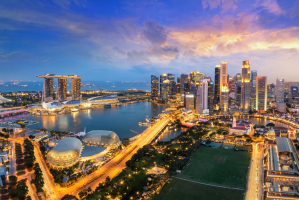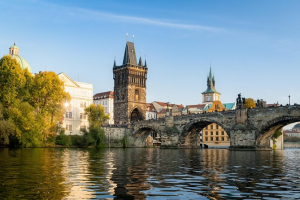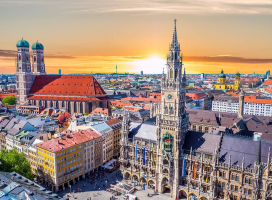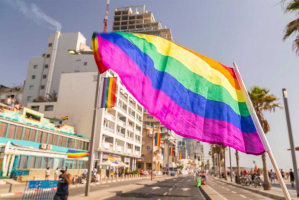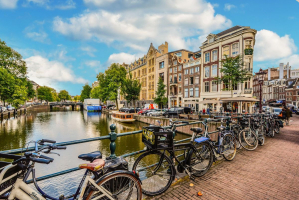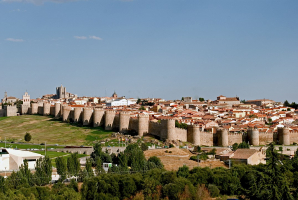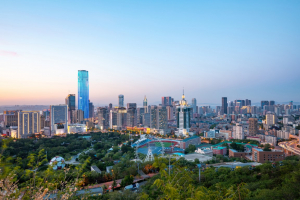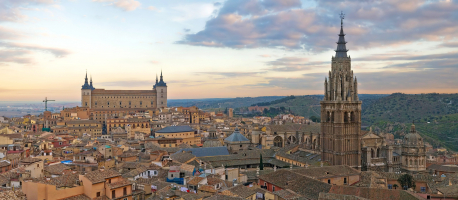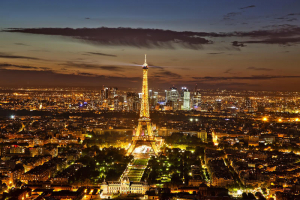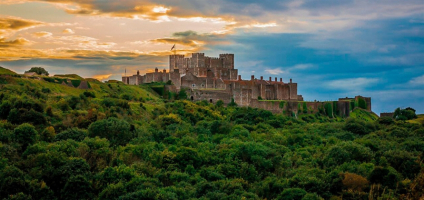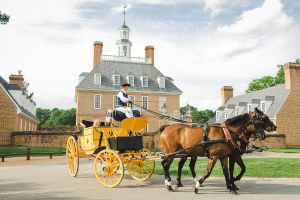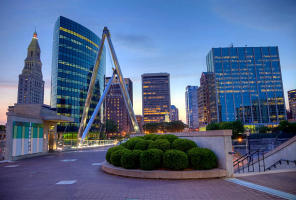Top 10 Most Colourful Cities
When we think of cities, color selection is not the first thing that comes to mind. In fact, we hardly ever pay attention to architecture in today's busy ... read more...world. In the concrete metropolises, we're used to, very few buildings and structures manage to stand out. However, the word "city" need not always connote the color gray. It's difficult to envision a town that is entirely blue or a city that is a rainbow. Urban areas with vibrant colors almost seem like an idea from a picture book, like the yellow brick road in The Wizard of Oz. However, vivid public spaces aren't just concepts for children's books. The world is full of vibrant cities that are just waiting to be explored.
-
The fisherman's island of Burano is located in the Venetian lagoon and, like the rest of Venice, is connected by a network of canals. While Venice can have a gloomy vibe, Burano's brightly painted houses stand out.
Burano consists of four small islands connected by a series of bridges and held together even more firmly by their colorful painting trend. The eye-catching color scheme had been upheld for decades and was even beginning to fade until it was reinstated in recent years.
Now that the homes are being repainted every two years, Burano's houses stand out with vivid colors that almost appear photoshopped. Each house is painted a different color from its neighbors, and anyone wishing to paint their home must first obtain permission from the neighborhood council.
Burano is well known for its fine lacework in addition to its distinctively painted houses, and the island even has a museum dedicated to it, though photography is not permitted there. Given that groups of visiting photographers are a common sight on the streets of this tiny but colorful island, the Museum of Lace may be the only place in the small neighborhood where photography is prohibited.To get to Burano, take the Vaporetto (no. 12) from the Fondament Nove in Venice. Before continuing on to Burano, the 40-minute Vaporetto ride will stop in Murano, an island known for its glass-blowing and well worth a visit.
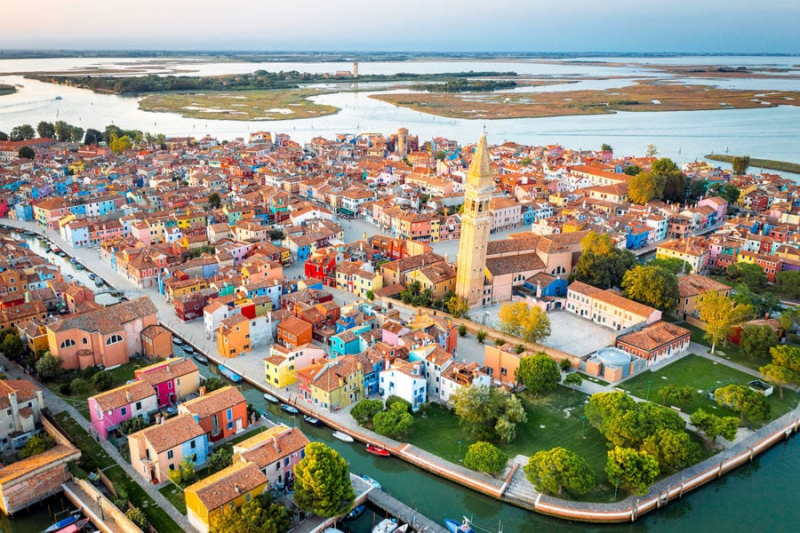
Expert Vagabond 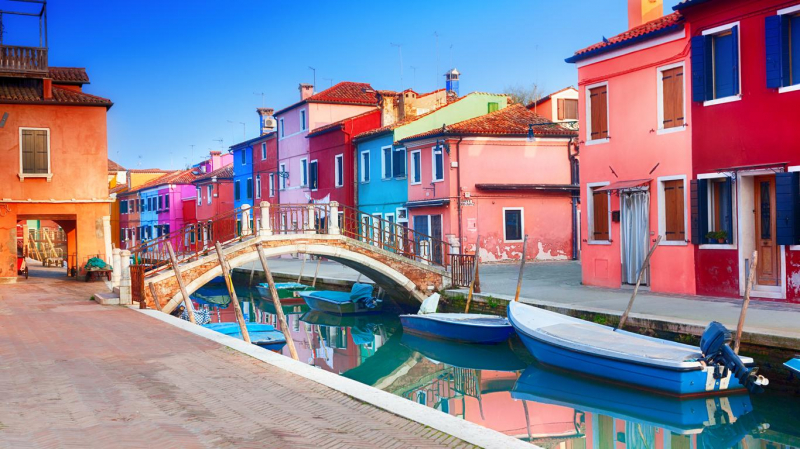
HotelsCombined -
John Munro Longyear, an American who founded the Arctic Coal Company in the region in 1906, is the namesake of this vibrant town. Even though there is currently only one mine operating in Longyearbyen, its coal mining past is still clearly visible in many of the structures. The town is the most northern town in the entire world and is located on the Svalbard archipelago. To fend off the cold and frost, the main street of the town's colorful wooden house rows are raised on piles. The motivation for the colorful houses is still a mystery, though. Some residents speculate that it might have served as a way to spread cheer and joy during the town's gloomy industrial past.
Svalbard's administrative center has something for everyone, whether you are looking for vibrant cultural offerings, the tranquillity of the majestic and endless world of ice, or planning a visit to one of the restaurants offering a taste of the Arctic. The cultural calendar is jam-packed with annual festivals, exhibitions, and events, so visitors will never be bored. Longyearbyen also has galleries, museums, and a variety of restaurants that specialize in local produce and Arctic specialties.
Many Longyearbyen locals refer to this feeling as the "Svalbard bug," which explains why so many people call this place home. They can proudly say that Longyearbyen is a place they can call "home" because of the people, unity, and nature. According to Statistics Norway, a person stays in Longyearbyen for about seven years on average.
Longyearbyen, a city of about 2000 people that is a part of a larger group of islands that make up Svalbard, is an example of how interesting places and vibrant cities tend to be found at the edges of our world. The warm locals, unusual wildlife, Arctic phenomena, and the backdrop of snow-capped mountains that guards the thriving city are what make Longyearbyen so beautiful. Set out on your own Arctic adventure!
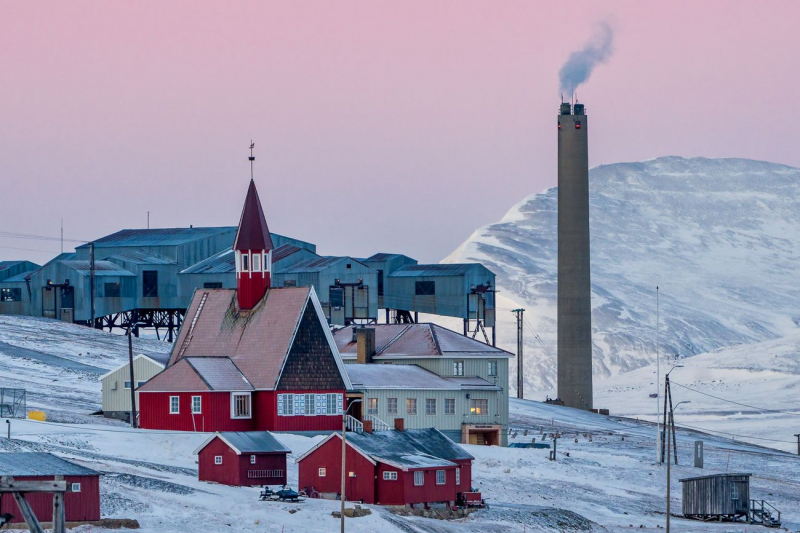
svalbardadventures.com 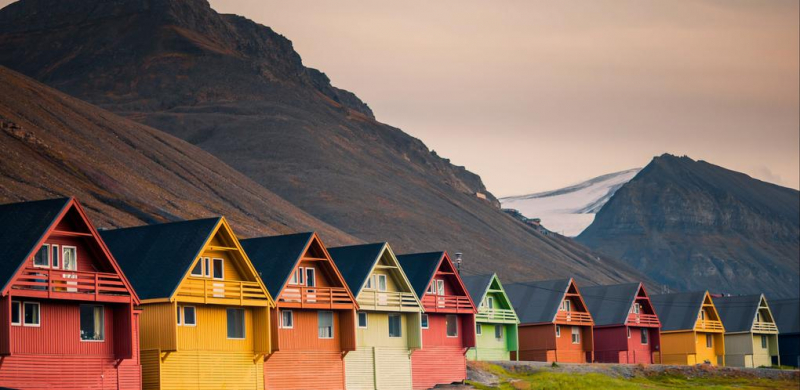
kayak.com -
The vibrant architecture in Havana is a legacy of the colonial era and the settlers who called the city home. The homes in Old Havana, for instance, display Dutch, English, French, and Spanish architectural influences. In Havana, almost half of the structures are painted in pastel shades of pink, yellow, and "colonial blue." The Mudéjar style, a Hispanic-Arabic influence brought by the Spanish colonialists, is what stands out the most, as evidenced by the tall arches and tilework of the buildings.
Havana combines the old and the new. The five plazas and the pastel-colored buildings that surround them all contribute to Havana's personality and allure. As you stroll through its streets, you're likely to see intriguing and lovely examples of how this city combines the contemporary way of life with the traditional colonial architecture of its ancestors. It should come as no surprise that Jazz music, along with the classic cars that can be seen driving through the neighborhood, is one of its defining characteristics.
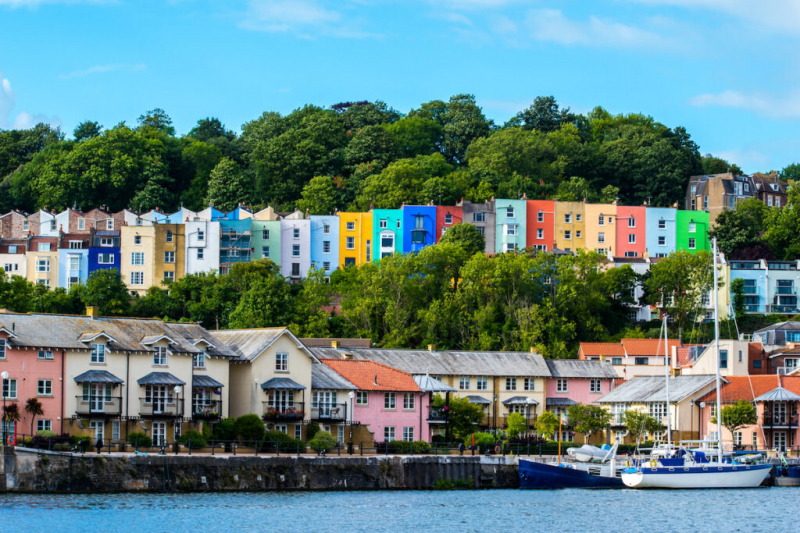
SION HANNUNA / SHUTTERSTOCK 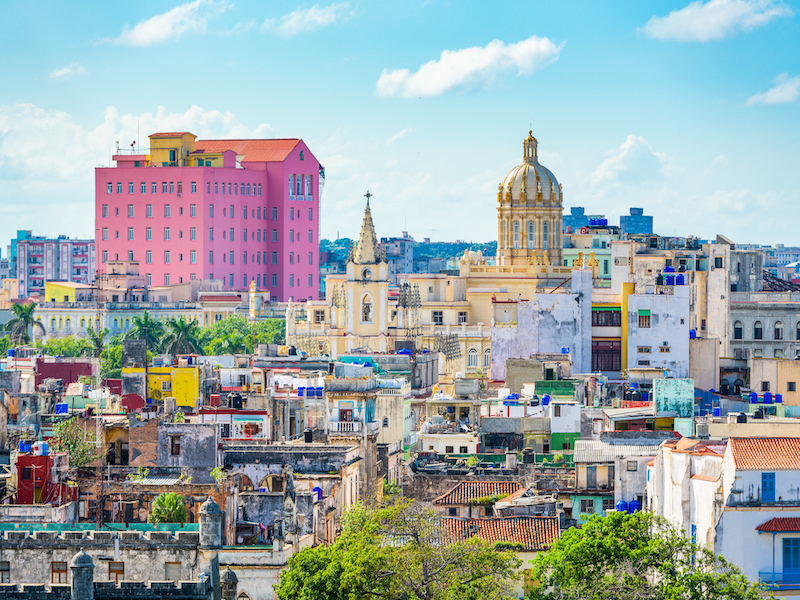
JTG Travel -
Jodhpur, the second-largest city in the northern state of Rajasthan, is known as the blue city, and it's easy to see why when you look down from the imposing Mehrangarh Fort that towers over the city.
Another entry in the "all-one-color" category is the Indian city of Jodhpur, which is a winding maze of blue-box houses situated beneath the imposing Mehrangarh fort. The indigo pigment, which was once used to indicate social status, stands out against the surrounding desert and appears especially magical at night.
The caste system that exists in India is responsible for the city of Jodhpur's blue, whitewashed homes. To set them apart from the homes of other castes, the priestly caste known as the Brahmins painted their homes in this shade of blue. All of the public now follows the tradition. The locals claim that the blue color has also served to ward off heat and mosquitoes.
The old neighborhood's quirky houses are all painted a lovely shade of blue. There are many theories as to why, including that the color deters termite attacks, keeps homes cool in the summer, or that Shiva devotees painted their homes blue because they believed it to be a sacred color because Shiva's body turned blue after being poisoned.
The stunning Umaid Bhawan Palace, a former residence of the Maharaja of Jodhpur, is right on the city's doorstep. It is now a hotel, so you can stay there or just come in for lunch and pretend to be a maharaja or maharani for an hour or so.
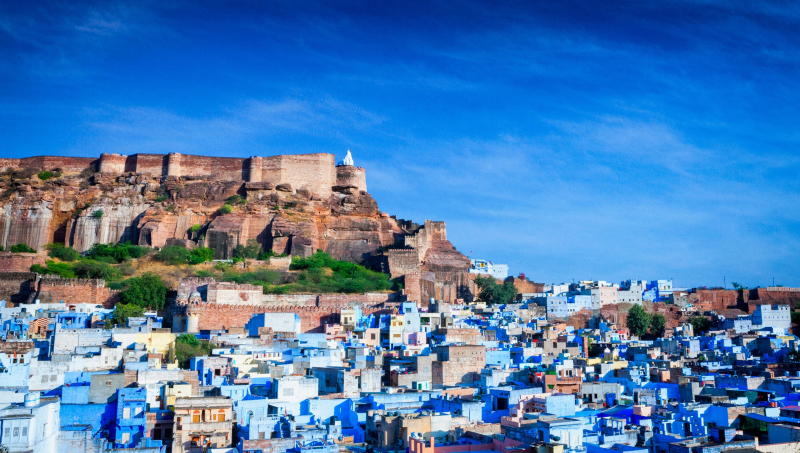
Taolmor/Dreamstime.com 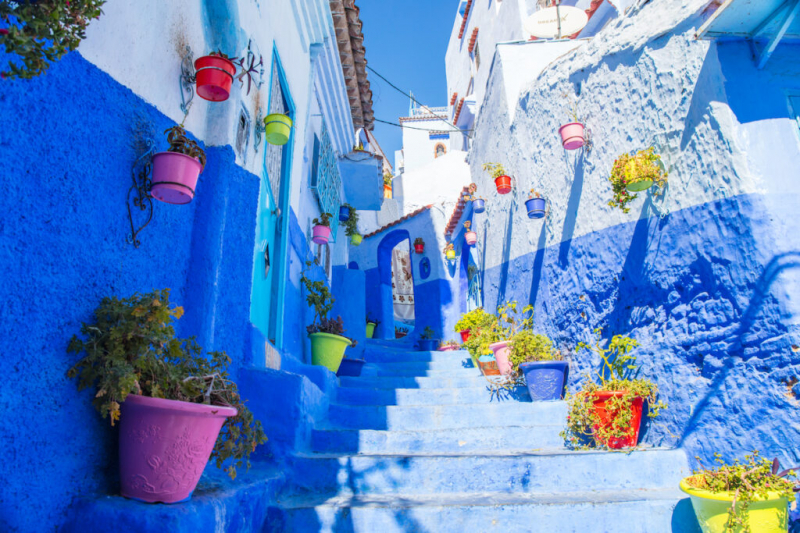
TATSUYA OHINATA / SHUTTERSTOCK -
Mexico's most vibrant city is without a doubt Guanajuato, which is a UNESCO World Heritage site. A vibrant student city known for international festivals has yet to be recognized for its vibrant beauty. The city is nestled in a valley, with colorful houses lining the twisting alleyways. Its downtown is dotted with vibrant colors ranging from green to orange to red. Many of the city's buildings are in the baroque and neoclassical styles.
This UNESCO World Heritage site is a visual feast for the eyes, with green, red, yellow, and orange buildings dotting the downtown streets and surrounding hills. This is one of Mexico's most captivating cities, with narrow streets, Baroque and Neoclassical buildings, and the red and yellow Cathedral Basilica Nuestra Seora de Guanajuato.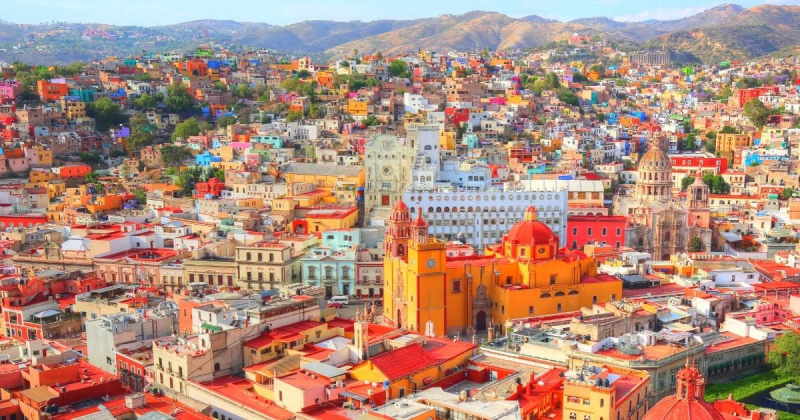
Travel Mexico Solo 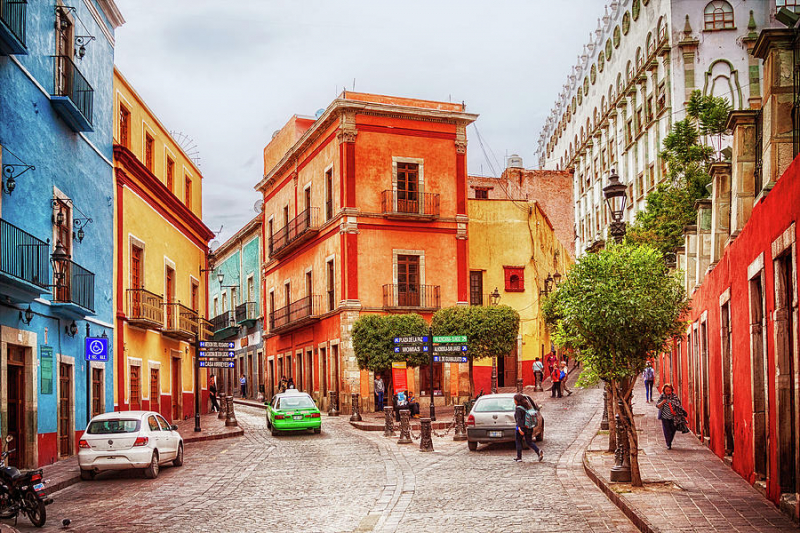
Fine Art America -
Curaçao is one of the Lesser Antilles islands and a part of the Netherlands. This Caribbean island is located off the coast of Venezuela. With good reason, it is listed as a world heritage site. Its capital Willemstad is a lovely colorful city. The buildings on this island come in a wide range of vivid gem tones.
The 19th century is where the rumored history of these striking structures originated. When the harsh sunlight was reflected off the area's typical white buildings, Dutch Governor-General Albert Kikkert would get headaches. In order to stop the splitting headaches, Kikkert ordered that all the buildings be painted in any color other than white.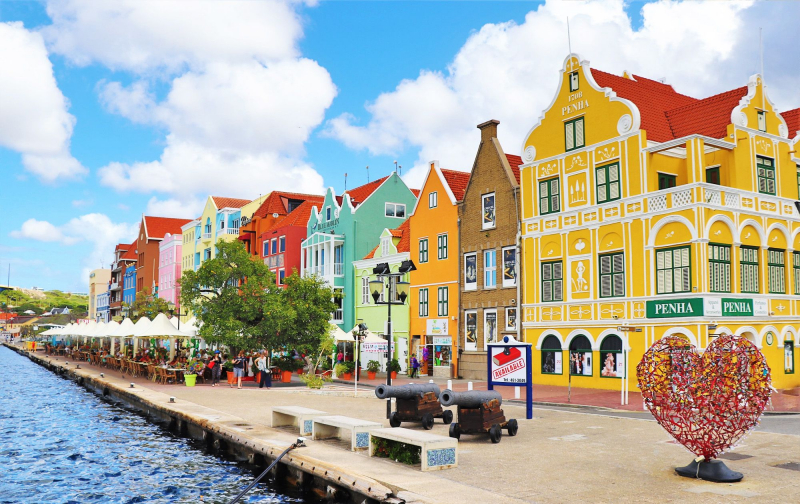
SANDALS® Resorts 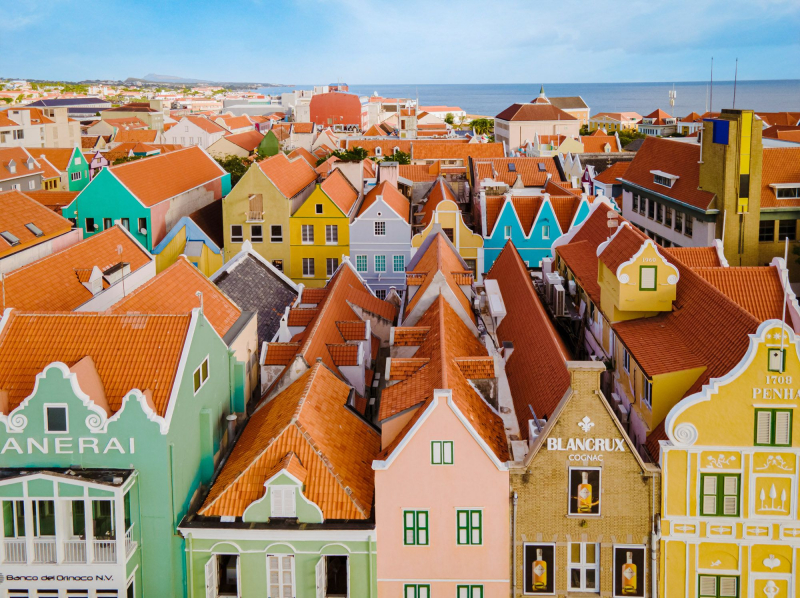
SANDALS® Resorts -
Izamal, located in the Yucatán Peninsula's center, has a strong religious tradition connected to the Mayan civilization. With seven Maya pyramids, Izamal is an important ceremonial center in the region. The Franciscan monasteries built in the area in 1549 show Spanish colonial influence. Izamal is a significant pilgrimage site in Yucatán state, and it is still a place where the Maya language is spoken!
Despite not having every color of the rainbow, this tiny city of cobblestones is included on the list thanks to its eye-catching yellow buildings. The yellow color continues to pay homage to the area's Mayan roots. The canary-colored 16th-century monastery at the center of town was constructed on top of a Mesoamerican temple.
This is Chefchaouen's yellow variant. Despite being thousands of miles away in South America, Izamal uses the same style of painting all of its buildings in a single color. The bright yellow color of the structures in Izamal emphasizes their architectural character. If you ever visit the area, be sure to visit their Mercado Izamal. The Mercado is home to a farmer's market where you can buy fresh fruits and vegetables. The farmer's market also has restaurants where you can sample the local specialty: deer tacos.
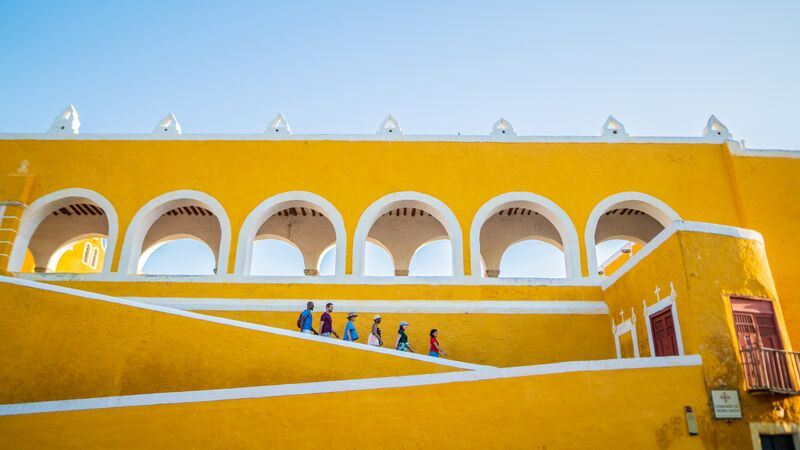
Intrepid Travel 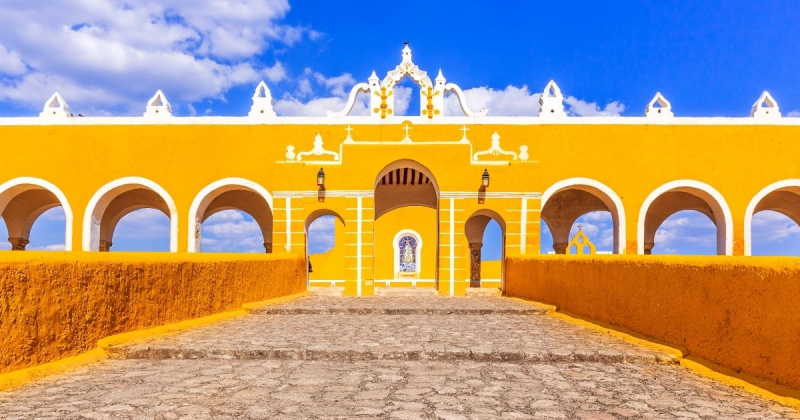
Travel Mexico Solo -
The province's capital, St. John's, is the ideal blend of big-city luxury and traditional small-town charm. It is one of North America's oldest and most easterly cities, and it has evolved into a rare destination full of character and charisma, with a contemporary, sophisticated edge.
Explore the winding, crowded streets that were carved out by horses and carriages. Pass the tightly packed, bright jellybean row homes that line the sides of steep hills and secret alleyways. When you get to the harbor after meandering down there, look towards the Narrows and picture how busy the waters used to be with fishing schooners. And go to Quidi Vidi, a charming city within a city that captures the essence of a bygone fishing outport.
Hike up nearby Signal Hill through the Battery, where tiny colorful wooden houses cling valiantly to ocean-ravaged cliff sides. The unmistakable, iconic Cabot Tower stands on the hill, a castle-like structure built to commemorate the 400th anniversary of John Cabot's voyage to Newfoundland. In 1901, Marconi famously received the first transatlantic wireless message here.
A captivating skyline can be seen from Cabot Tower as you look out over the cliffs and harbor. The Rooms, which houses a sizable collection of artifacts, archival materials, and clock towers from the Basilica Cathedral of St. John the Baptist, is perched high on the horizon next to it.
Make a reservation at one of the city's culinary hotspots. Several award-winning chefs are elevating Newfoundland cuisine with locally foraged, fished, and hunted fare.
Sit back, relax, and enjoy live music or local theater, where actors will transport you to another place and time. Head to any local pub or bar for traditional tunes and possibly even a scuffling (dance). Every evening, George Street is alive with energy, especially during the annual George Street Festival, which lasts five days and nights and features dynamic musical entertainment.The kind and outgoing residents of St. John's will treat you as one of their friends and will be happy to point you in the right direction, assist you on your journey, or even drive you there. No matter how tall the tale, I'm always happy to tell it just to make you smile. Without a doubt, this city is unique.
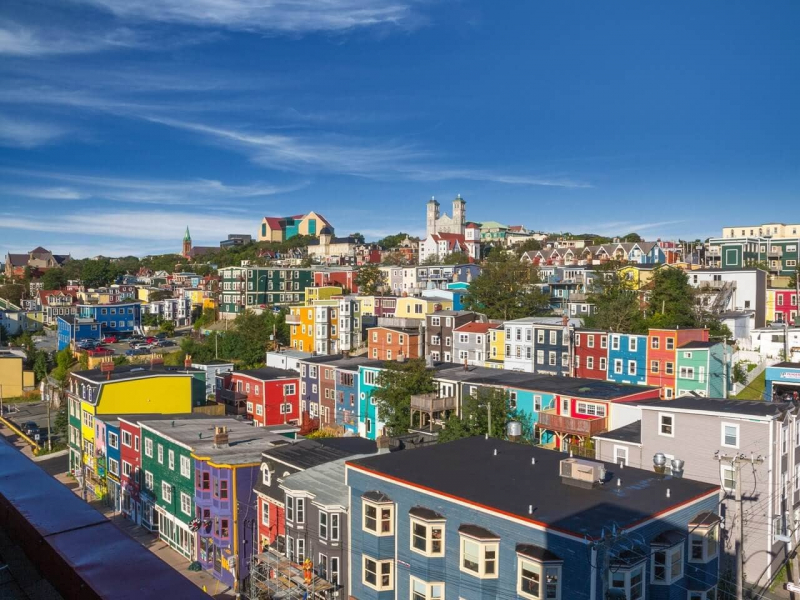
Newfoundland and Labrador Tourism 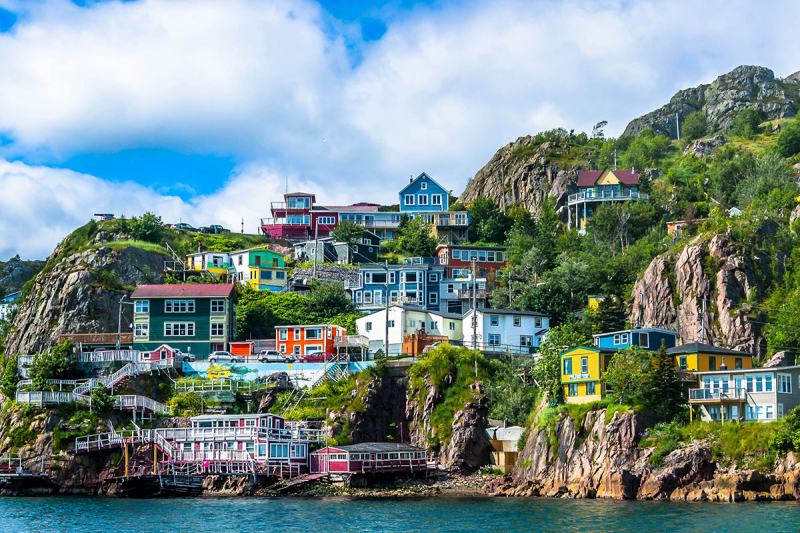
Canadian Immigrant -
Chefchaouen in Morocco, known as the 'Blue Pearl,' is nestled between the Rif mountains. Its deep sky-blue hues are due to Jews fleeing the Spanish Inquisition through Morocco in the 15th century. The Jewish community allegedly colored the buildings blue to resemble the color of the sky in order to feel closer to God and heaven. Other locals believe the blue is there to keep the heat or mosquitos away with its cool tones. Travelers from all over the world visit Moroccan city because it is affordable.
In this Moroccan village, there are about 40,000 residents. Tangier and Tetouan, two significant cities, are nearby Chefchaouen. Historic structures painted in a range of cyan, powder blue, and periwinkle hues frame the cobblestone streets and alleyways. The old, walled kashba stands out with its earthen hue, despite the fact that the majority of the city is blue, as you will be happy to hear. It still has a museum, a lovely garden, an art gallery, and a lot of history, so that doesn't make it any less inviting.
You can hike outside of the city on a variety of treks to see more of the Rif Mountains.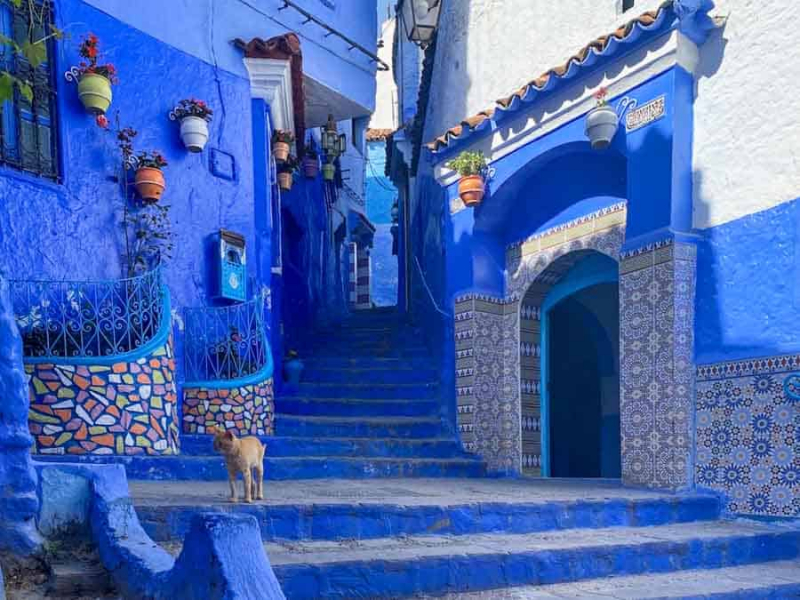
Travel Notes & Beyond 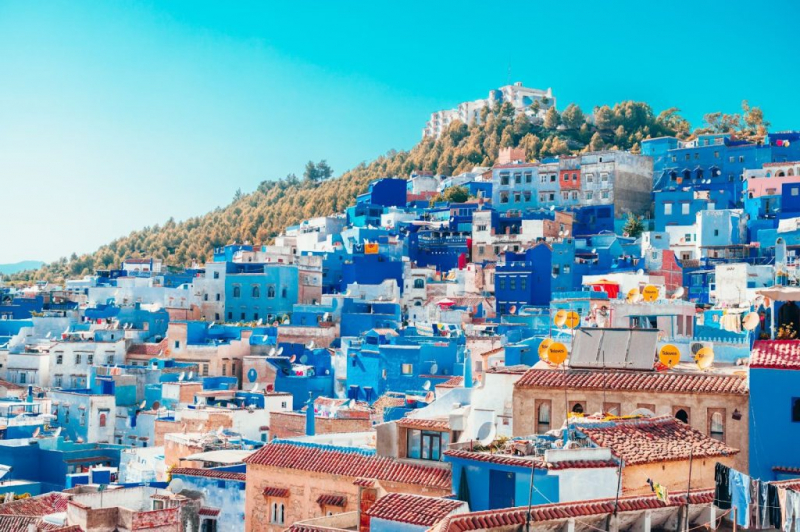
Travel Talk Tours -
Copenhagen's Nyhavn is the place to be. For nearly 300 years, old townhouses have been painted in bright colors, creating a one-of-a-kind and enjoyable sight for visitors. Nyhavn in Copenhagen was once a busy commercial port with ships from all over the world. Today, the striking yellow, orange, and blue houses, some of which date back to 1681, have been renovated, and the old port is filled with high-end restaurants.
The harbor in Denmark's Nyhavn neighborhood is well-known. This vibrant neighborhood was once home to a number of artists, as well as renowned fairytale author Hans Christensen Anderson. Now that the area is surrounded by upscale cafés and eateries, people can enjoy a nice meal by the water while watching the wooden ships navigate the canal.
It's the ideal place to relax and take in the afternoon because it's lined with bars and eateries. Hans Christian Andersen wrote his first stories in a red house (number 67) across Nyhavn, which you might be able to see.
Additionally, early in the morning or just before sunset is when the colors are at their most vibrant. While you are enjoying this beautiful city, be sure to stop by.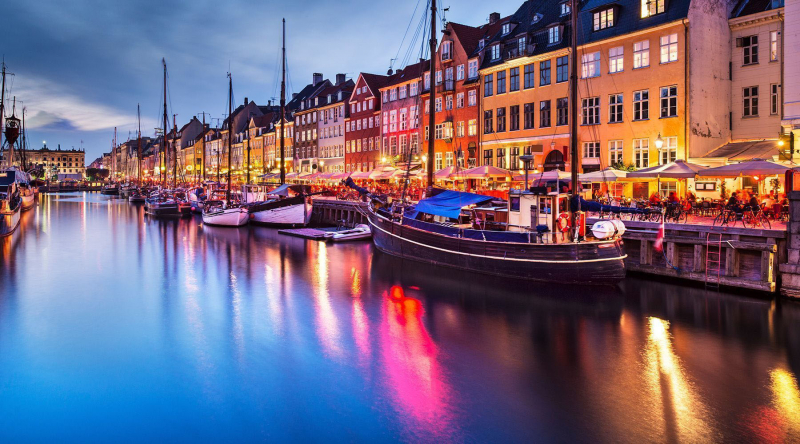
Azamara Cruises 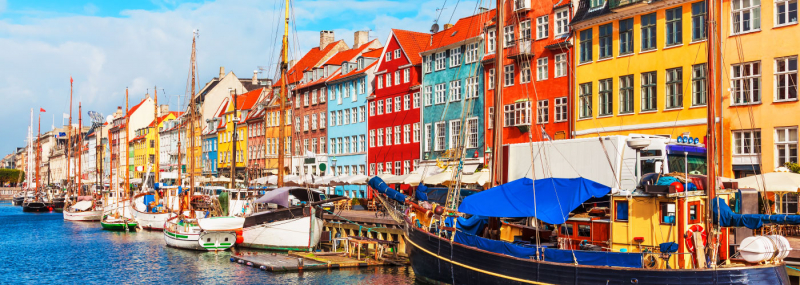
European Best Destinations












